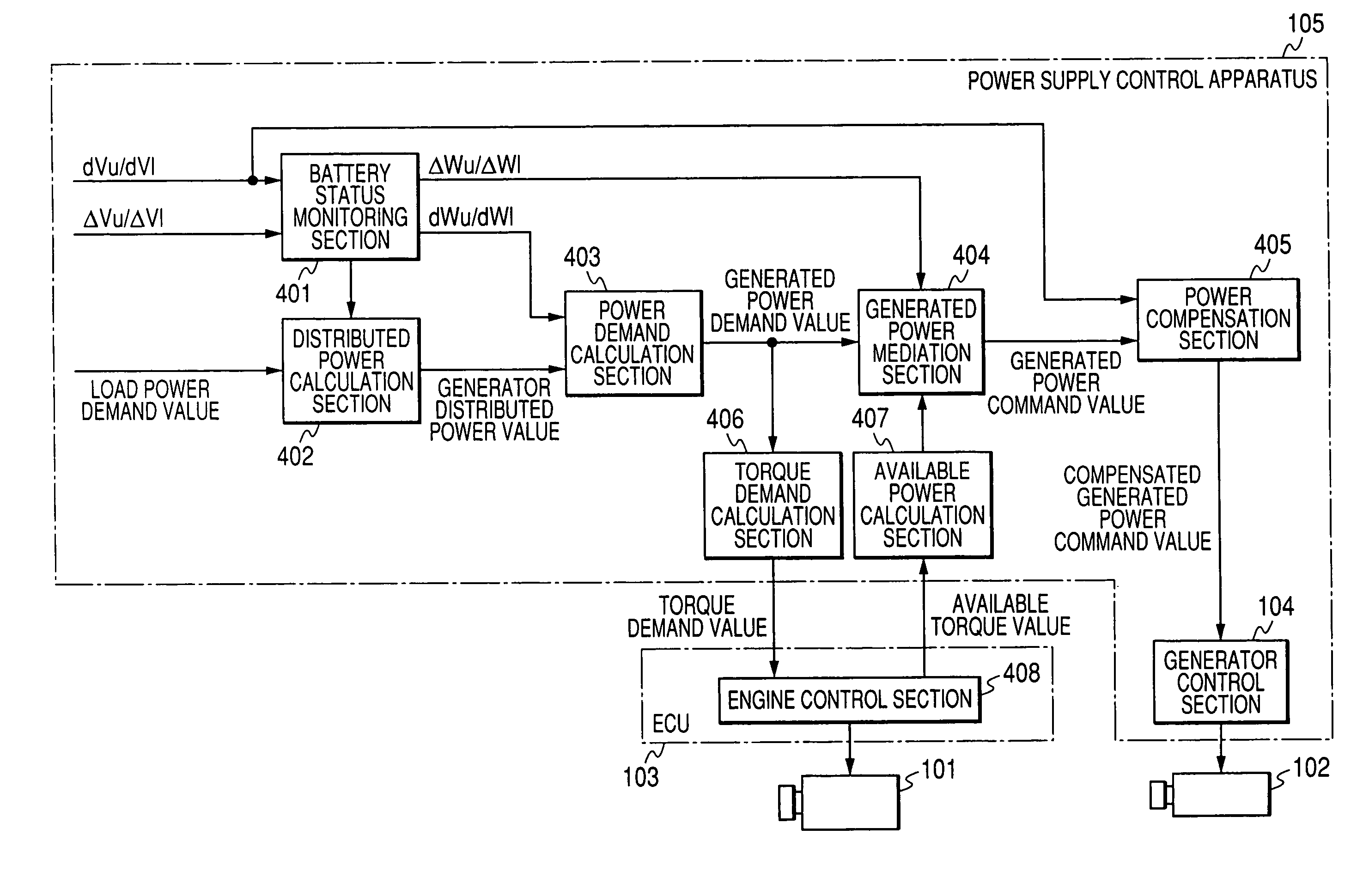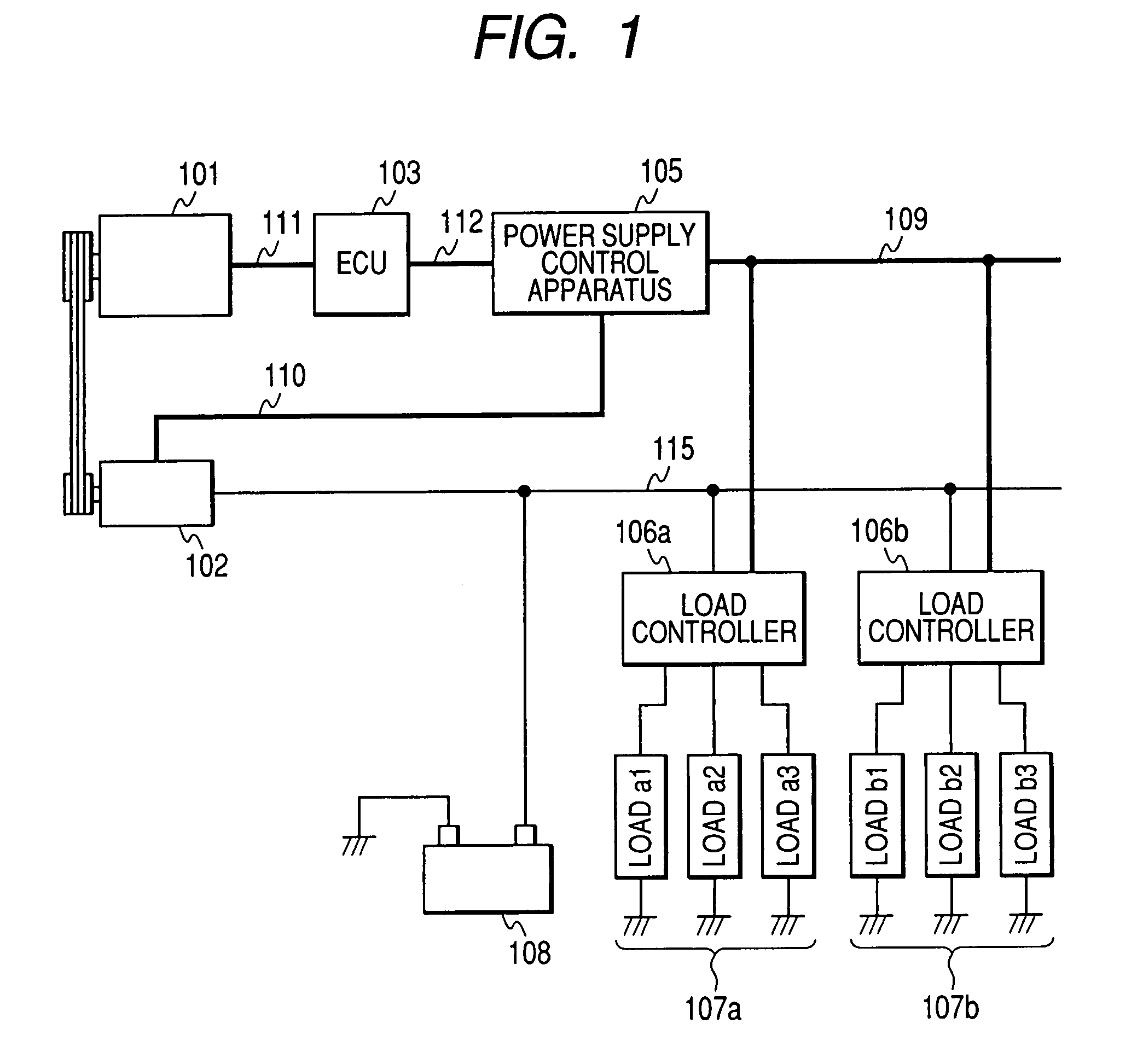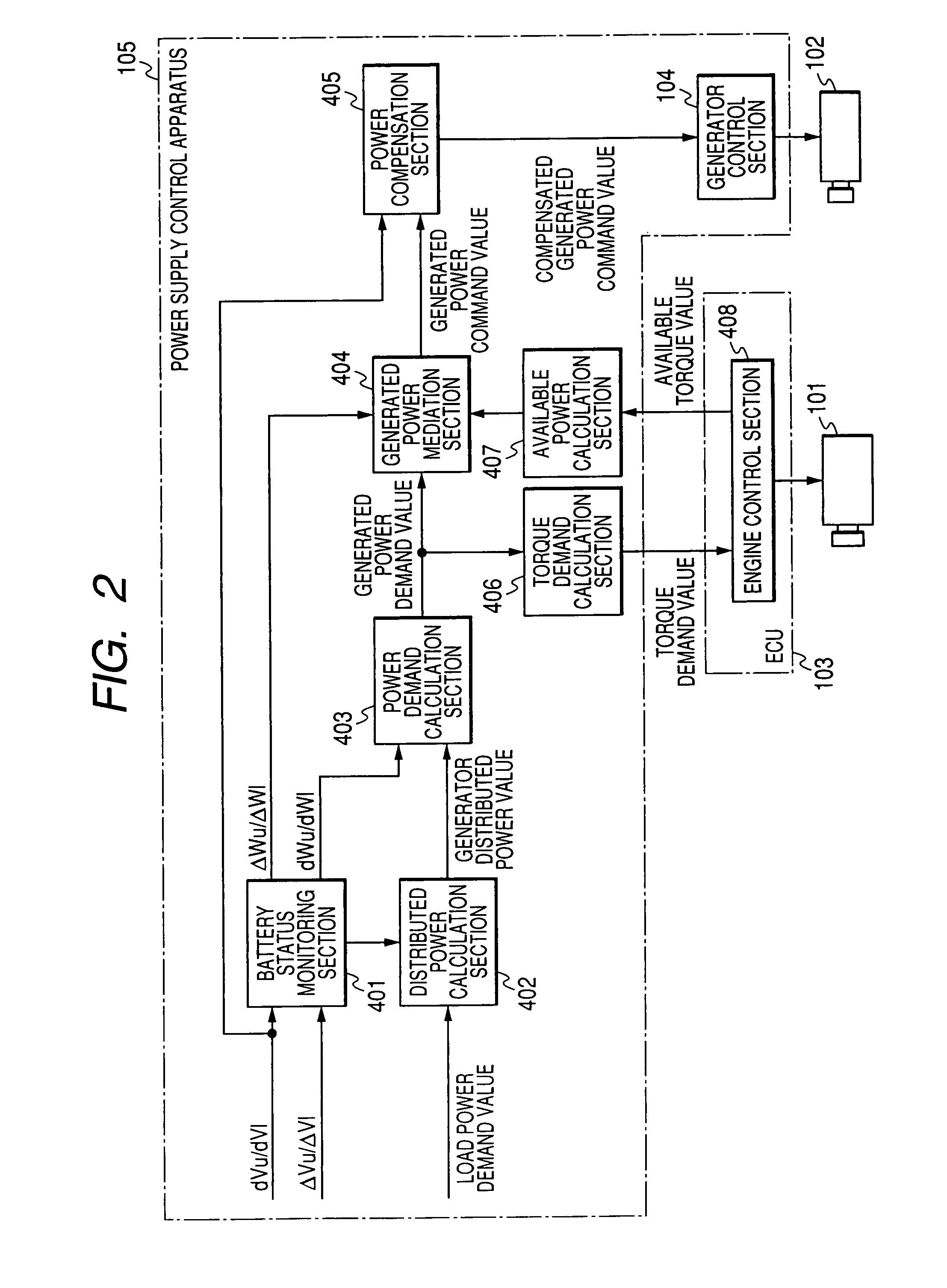Electrical power supply system for motor vehicle
a technology of electric power supply and motor vehicle, which is applied in the direction of electric generator control, dynamo-electric converter control, electric control, etc., can solve the problems of increasing the fuel consumption of the engine, the power supply voltage (i.e. voltage and voltage), and the engine torque load, so as to reduce the level of electrical power, reduce the amount of engine torque load, and reduce the effect of engine speed lowering
- Summary
- Abstract
- Description
- Claims
- Application Information
AI Technical Summary
Benefits of technology
Problems solved by technology
Method used
Image
Examples
first embodiment
[0063]FIG. 1 shows the overall configuration of a first embodiment of a vehicle-use power supply system. As shown, the system includes an engine 101, an electric generator 102, an engine control unit (abbreviated to ECU in the following) 103, a power supply control apparatus 105, load control apparatuses 106a and 106b, and a battery (i.e., electrical storage battery) 108.
[0064]The electric generator (referred to in the following simply as the generator) 102 is driven for rotation by the engine 101, and supplies operating power to electrical loads 107a, 107b while also supplying electrical power to charge the battery 108. The power supply control apparatus 105 is connected to the generator 102, and to the load control apparatuses 106a and 106b which are respective controllers of the power supplied to the loads 107a and 107b. Information sent from the load control apparatuses 106a, 106b specifying the total amount of power that is currently required by the loads 107a, 107b will be ref...
second embodiment
[0143]FIG. 13 shows details of a power supply control apparatus 105A in a second embodiment of a vehicle-use power supply system. The second embodiment differs from the first embodiment only in that the power supply control apparatus 105 shown in FIG. 1 is replaced by the power supply control apparatus 105A, which differs from the power supply control apparatus 105 shown in FIG. 2 by further including a load power command value calculation section 409. The load power command value calculation section 409 receives the load power demand value (which is also inputted to the distributed power calculation section 402, as described for the first embodiment) and the generated power command value that is derived by the power generation mediation section 404 as described for the first embodiment. Based on these inputs, the load power command value calculation section 409 derives a command value of load power to be supplied by the load control apparatuses 106a, 106b to their loads 107a, 107b....
fourth embodiment
[0176]With the above embodiments, the ECU 103 and the power supply control apparatus 105 are connected by the communication line 112. However with a fourth embodiment as shown in FIGS. 19 and 20, the power supply control apparatus 105 is implemented within an ECU 103A. This provides the advantages that when control of the engine 101 and of the generator 102 is executed by the same microcomputer (or microcomputers), a common memory can be utilized, so that data communication between the engine control section 408 and the power supply control apparatus 105 can be performed at high speed. Improved synchronization can thereby be achieved between the level of torque being applied by the engine 101 to drive the generator 102 and the level of torque that is actually being absorbed by the generator 102.
[0177]It should be noted that as an alternative to the above, it would be equally possible to incorporate the engine control unit within the power supply control apparatus, or to incorporate ...
PUM
 Login to View More
Login to View More Abstract
Description
Claims
Application Information
 Login to View More
Login to View More - R&D
- Intellectual Property
- Life Sciences
- Materials
- Tech Scout
- Unparalleled Data Quality
- Higher Quality Content
- 60% Fewer Hallucinations
Browse by: Latest US Patents, China's latest patents, Technical Efficacy Thesaurus, Application Domain, Technology Topic, Popular Technical Reports.
© 2025 PatSnap. All rights reserved.Legal|Privacy policy|Modern Slavery Act Transparency Statement|Sitemap|About US| Contact US: help@patsnap.com



